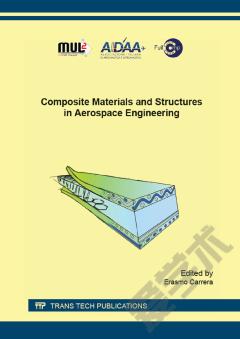Mechanics of Aeronautical Composite Materials
The objective of this lesson on composite structure sizing is to present the principles that allow the sizing of composite laminates widely used in composite structures. After a brief presentation of the primary material used in aircraft structures, the basic theory of laminated plates under membrane and bending loading as well as their associated fracture criteria, are touched on. The fracture of a UD ply is then explained in detail, in order to demonstrate its inherent complexity and the limits of the criteria in use. Next, these criteria of the base ply are used to size a complete composite laminate. Lastly, two fundamental cases of structure calculations are presented: sizing holes and multi-bolt joints, as well as study of buckling. The criteria that are specific to aviation, with in particular the notion of limit loads and ultimate loads, are addressed. The notion of damage tolerance, specific to aviation is then presented, and in particular the notion of impact damage tolerance. These notions are fundamental to understanding the specificities of sizing aircraft composite structures. Corrected exercises then allow curious readers to test their understanding of the different subjects. These corrected exercises are typical for sizing aircraft composite structures. Engineers will also find exercises that resemble their case-studies. Lastly, an Excel spreadsheet allows presents the calculations in the book in detail for review. The originality of this particular title is that it places itself very clearly in the field of aviation, where the sizing criteria are very specific. Take the calculation of holed plates and multi-bolt joint that are typical for composite aircraft structures and yet are not often touched on in the literature. Nonetheless the notions in this book remain valid for most industrial purposes. Another originality of this book is that it shows a number of typical calculations for aeronautics. These examples illustrate the many complexities of sizing for composite laminates. Readers can also easily perform these calculations using the Excel spreadsheet provided. Lastly, this book groups a big part of the notions required to understanding sizing for aircraft composite structures, and it should interest engineers that work in that field. We will also note that the field of aeronautics is not the only one interested in using composite structures, and other areas, such as automotive, railway or civil engineering (bridges etc.) increasingly use composite structures. While the field of aviation has precedence when it comes to composite structure sizing, it should be noted that these methods will be widely used in other fields in the years to come.
{{comment.content}}








 京公网安备 11010802027623号
京公网安备 11010802027623号